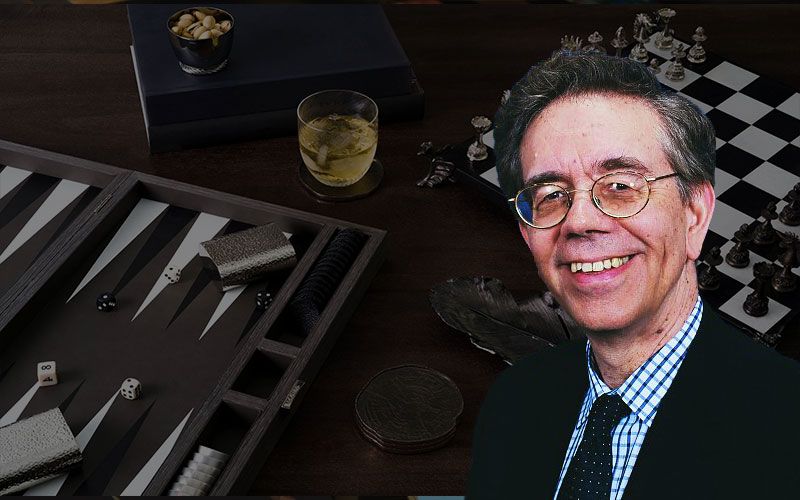
Backgammon is basically a race, and losing ground in a race is usually a bad idea, to be avoided if at all possible. Safe, constructive plays are generally good. Constructive plays which leave a few indirect shots aren’t bad, and are often necessary to make progress.
But sometimes there aren’t any safe plays, or even moderately risky plays, that make progress. What if the safe plays all hurt your position in some way? Then you may start looking at plays that leave a direct shot. These plays may be costly if your opponent hits, but they may improve your position if your opponent misses (which he’s generally favored to do.)
Let’s look at a few criteria for volunteering a direct shot. Since we’ve been talking about high anchor positions in the last few articles, we’ll start with a high anchor problem. Consider Position #1.
Loading board
Black leads in the pip count by 22 pips, 111 to 133. He’s already doubled, and now he’s trying to bear his checkers home against Orange’s high anchor on his 5-point. He’s a favorite to win, but not an enormous favorite; on roll, he’s just about 2-to-1 to win the game.
His 6-2 roll, however, is one of his worst. There’s only one safe play: 8/2 8/6, clearing the 8-point. The strength of the play is solely that it leaves no blots. The downside is pretty obvious. By clearing the 8-point, Black removes a crucial landing spot that he’ll need later when he tries to clear the 11-point and the 13-point.
There’s another play to consider, however. It’s 13/7 4/2. Black leaves a blot on his bar-point which Orange can hit with a deuce. If Orange misses, however, Black’s game is better in every respect. He’s kept the 8-point as a landing spot, and next turn he’ll have several rolls, like 6-5 and 4-3, which make the 7-point while clearing one of his troublesome outer points.
13/7 4/2 is what we call a “pure” play. Pure play simply means putting your checkers where they belong, assuming they don’t get hit. Slotting the 7-point certainly qualifies as a pure play, since if Orange doesn’t roll a deuce, Black will be much better off in all future variations.
Are pure plays right? That depends. Basically, when considering a pure play which volunteers a direct shot, you need to balance the upside (ease of future play) versus the downside (the cost of getting hit). That’s often not an easy choice. Here are some of the issues you should consider.
Arguments against volunteering a shot:
-
If your opponent’s position on the other side of the board is strong (closed board, solid prime, or some of both), you probably don’t want to leave a shot.
-
If your position is good and your future rolls will play easily (at least for awhile), you probably don’t want to leave a shot.
-
If your opponent’s position is stretched, so that he may have to concede a crucial point before you do, you probably want to wait and play safe.
Arguments for volunteering a shot:
-
If your opponent’s position is weak (open points or blots in the home board), you may not mind leaving a shot.
-
If the point is crucial to winning the game, you may want to leave a shot.
-
If your opponent is vulnerable after being hit, you may want to leave a shot.
Let’s apply these arguments to Position #1 and see what they tell us.
How strong is my opponent’s home board?
It’s actually very strong. This is a powerful argument against leaving a shot. Orange is very close to completing a prime, so a hit will probably win the game for him. At the very least, he’ll be a solid favorite.
How easily do my future rolls play?
This is ambiguous. If you clear the 8-point, you still have a spare on the midpoint, which probably represents one free roll. You may be able to shift some of the checkers in your home board, which might represent another roll or two. All in all, you might have two or three rolls to play before you have to break a key point.
Will my opponent have to concede a key point (his 20-point or midpoint) before me?
No.
How crucial is the 7-point to winning the game?
It’s certainly helpful. Actually, by slotting the 7-point you get to keep the 8-point as a bonus, and the two points together are very useful.
Is my opponent vulnerable after hitting?
He’s somewhat vulnerable. He’ll have a couple of blots floating around, which might allow you to reenter and attack, but you’ll still be a big underdog after getting hit.
The biggest consideration here is the strength of Orange’s home board. Hitting is probably a winner for him. If all the other arguments came out in favor of slotting, then slotting might be correct, but here they’re collectively ambiguous. So play safe with 8/6 8/2 and wait. Leaving a shot is a blunder.
To see when leaving a shot is right, take a look at Position #2.
Loading board
Now Orange’s home board is not impressive at all, and Black doesn’t need to be afraid of being hit, so 13/7 4/2 is the best play. Orange will hit if he can, but in the resulting positions, Orange will be a long way from winning.